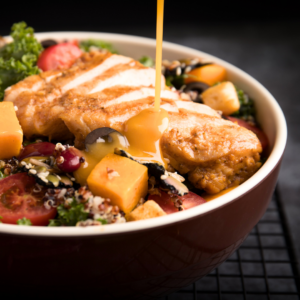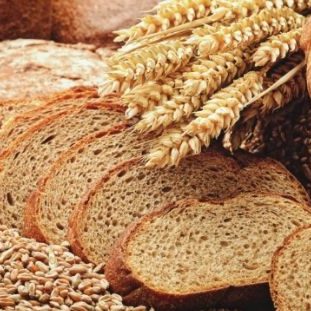Digestive Health Specialists, PA is here to help if you, or someone you know, would like more information or if you are experiencing any digestive health symptoms and would like further evaluation. Feel free to call us at 336-768-6211 or fill out the form below.
Navigating the Holidays with Celiac Disease
The holiday season is a time of joy, celebration, and, of course, indulgence in delicious food. However, for individuals with celiac disease, the festivities can bring a unique set of challenges. Celiac disease is an autoimmune disorder triggered by the ingestion of gluten, a protein found in wheat, barley, and rye. As the holiday season approaches, it’s essential for those with celiac disease and their loved ones to be aware of the condition, its symptoms, risk factors, and treatments, and to find ways to enjoy festive meals without compromising health.
Understanding Celiac Disease
Celiac disease is a chronic condition that affects the small intestine. When individuals with celiac disease consume gluten, their immune system responds by damaging the lining of the small intestine. This damage can lead to nutrient malabsorption and various symptoms. Common symptoms of celiac disease include diarrhea, abdominal pain, fatigue, weight loss, and irritability. However, some individuals may experience atypical symptoms or have no apparent symptoms at all.
Identifying Risk Factors
Celiac disease has a genetic component, meaning it tends to run in families. If a first-degree relative, such as a parent or sibling, has celiac disease, the risk of developing the condition increases. Other risk factors include having another autoimmune disorder, such as type 1 diabetes or autoimmune thyroid disease.
Diagnosing and Treating Celiac Disease
Diagnosing celiac disease involves blood tests to detect specific antibodies and, if indicated, a biopsy of the small intestine. Once diagnosed, the primary treatment for celiac disease is a strict gluten-free diet. This means avoiding not only obvious sources of gluten but also hidden sources that can be present in processed foods, sauces, and even medications.
Navigating the Holidays
The holiday season often revolves around shared meals and festive treats, making it challenging for those with celiac disease to fully participate in the culinary traditions. However, with careful planning and communication, individuals with celiac disease can still savor the season without compromising their health.
- Communication is Key: When attending holiday gatherings, communicate your dietary needs to the host in advance. This ensures that they are aware of your restrictions and can make accommodations. Offering to bring a gluten-free dish to share can also be a considerate gesture.
- Create a Safe Space: If hosting the celebration yourself, take steps to create a gluten-free zone in the kitchen. Use separate utensils, cutting boards, and cooking surfaces to avoid cross-contamination. Label gluten-free dishes clearly to prevent mix-ups.
- Embrace Gluten-Free Alternatives: Fortunately, there are now many gluten-free alternatives available for traditional holiday dishes. Consider using gluten-free flour for baking, and explore alternative grains like quinoa, rice, and corn. Many supermarkets offer gluten-free stuffing, gravy, and pie crusts, making it easier to enjoy classic holiday fare.
Gluten-Free Holiday Recipes
1. Vegan and Gluten-Free Cinnamon Rolls
- Wet
3/4 scant cup unsweetened non-dairy milk
2 tbsp cane sugar
1 tbsp vegan butter (I use Smart Balance)
1 packet active dry yeast (or 2¼ tsp) - Dry
2 cups gluten-free flour (I use Pillsbury)
3/4 cup almond flour (be sure it is not almond meal)
2 tbsp cane sugar
2½ tsp baking powder
½ tsp salt
4 tbsp COLD butter - Filling
3 tbsp melted butter
2/3 cup brown sugar (light or dark, your preference)
1 tbsp ground cinnamon
Preheat oven to 350, grease a standard pie plate or round baking dish and set aside. From the wet ingredients, heat your milk on the stovetop to about 110 degrees-do not exceed this as it can kill the yeast. Add the butter and sugar and stir until melted and incorporated. Add the yeast and set aside to bloom the yeast for 10 minutes. It will get puffy and frothy on the surface. If you don’t see this, it may mean the yeast is expired, or the liquid was too hot or too cold. In a mixing bowl, sift together dry ingredients and cut in the cold butter until it looks like small pebbles or sand. Add the wet mixture to the dry slowly and mix with your hands until a soft cookie-like dough forms. If it’s too wet, add a little more flour as needed to prevent sticking. Cover a cutting board with plastic wrap, and dust with flour. Place dough in the center of the board and sprinkle with more flour, top with more plastic wrap or parchment paper and roll dough to a rectangle about 1/8th of an inch thick. Once wrap/paper is removed, brush with melted butter then sprinkle brown sugar and cinnamon evenly over dough. Using the plastic wrap on the cutting board, roll the dough into a cylinder lengthwise. Cut into 8 even pieces and carefully transfer to the prepared dish. Cover with plastic wrap and a towel and let proof in a warm place for 30 minutes. These do not rise as much as rolls containing gluten, but they will increase some. Once rolls are touching, or close to, uncover and bake 30-35 min, until golden brown on top and they have expanded. Sprinkle with sanding sugar while warm for a slight crunch. Store leftovers (if any) covered at room temperature 3-4 days, or 1 month in the freezer.
- 2 lbs. chicken tenderloin, cut into chunks
- 1 cup pineapple juice (I like to add pineapple chunks too)
- 1/2 cup packed brown sugar
- 1/3 cup Gluten-Free soy sauce
Combine all ingredients into crock pot. Cook on low 6-8 hours. Serve over rice or on a salad.
- 2 cups balsamic vinegar
- 1/2 cup granulated sugar
- Pinch of salt
- 2 ounces of brie cheese, softened**
- 2 peaches, pitted and sliced into wedges**
- 1/4 lb. sliced prosciutto
Pour balsamic vinegar, sugar, and a pinch of salt into a medium sauce pan over medium-high heat. Bring to a boil, stirring to dissolve sugar. Reduce to medium and simmer until reduced by half. Set aside to cool completely. To assemble, cut a small spoonful of cheese and spread over a slice of peach. Wrap in prosciutto and pierce with small skewer (you can add multiple bites to one skewer, or put individuals on toothpicks). Drizzle with balsamic glaze to serve.
**You can swap out different fruits and cheeses, I’ve used pears in place of peaches with brie.
By understanding celiac disease, its symptoms, and effective management strategies, individuals can confidently navigate the holiday season without sacrificing the joy of festive meals. With the right precautions and a bit of creativity, those with celiac disease can create a holiday experience that is both delicious and health-conscious.













